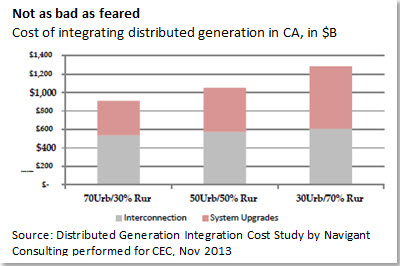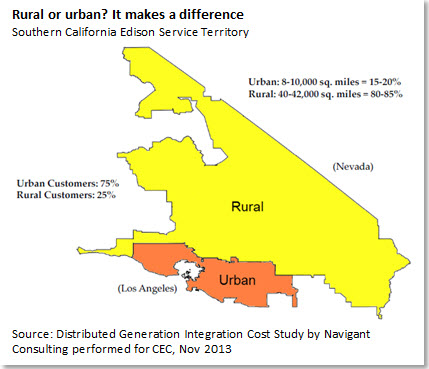Less expensive in urban, more in rural areas
California Governor Jerry Brown has set a goal of having 12 GW of localized renewable energy, aka distributed generation, by 2020. At the time the target was set, nobody really knew if it could be met in time, or how much it would cost.
In May 2012, Southern California Edison Company (SCE), one of the 3 big utilities, published a report that estimated infrastructure cost to accommodate its share of localized renewable energy, roughly 4,800 MW, in the $1-4.5 billion range depending on whether DG was mostly installed in urban or rural areas. SCE concluded that costs could be reduced by encouraging installations in areas that are better equipped to accommodate these resources, a sensible recommendation.

In November 2013, the California Energy Commission (CEC) released a study by Navigant Consulting examining the highly variable costs to interconnect DG resources depending on where they are added on the network.
The study examined costs under 3 scenarios:
- Case 1: 70% urban, 30% rural;
- Case 2: 50% percent each; and
- Case 3: 30% urban, 70% rural
The results suggest costs ranging from a low of around $0.9 billion when DG is installed mostly in urban areas to more than $1.3 billion when it is located mostly in rural areas (graph above), not surprising, except that the upper range is considerably lower than SCE’s original high estimate.

There are two cost components to integrate DG to the distribution network. The first is the cost of interconnection — which includes new lines and equipment needed to connect DG to the distribution system. The second is system upgrades — which includes enhancements to the existing system or mitigation measures needed to keep the network in proper operating order.
Navigant puts total integration costs for DGs to range from $190-270/kW for the distribution system. There are a number of other variables that could affect the total costs.

